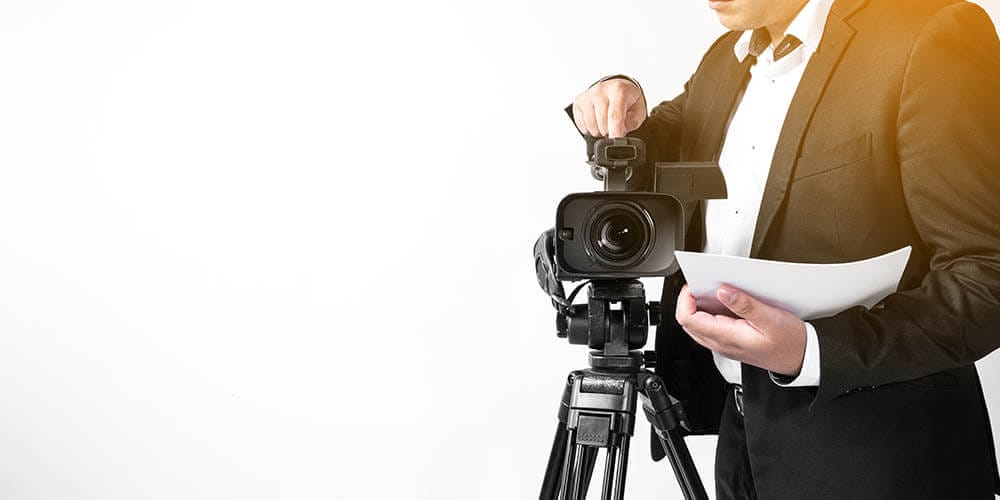The Ultimate Guide to Legal Videography for Lawyer and Legal Teams
The Ultimate Guide to Legal Videography for Lawyer and Legal Teams
Blog Article
Digging Into the Mechanisms of Lawful Videography: Introduction Its Operation in Shielding Authentic Visual Testimony for Judicial Process
In the realm of judicial proceedings, the duty of legal videography stands as a keystone in protecting and offering aesthetic proof. As innovation proceeds to advancement, the mechanisms behind lawful videography have become increasingly intricate, supplying a crucial layer of authenticity to statements recorded on video clip.
Historical Evolution of Legal Videography
Examining the historic development of legal videography reveals a significant makeover in the capturing and presentation of aesthetic proof within the legal landscape. In the past, legal proceedings greatly depended on written transcripts and pictures to document events and supply proof. However, with the introduction of video clip modern technology, the lawful industry saw a paradigm change in just how aesthetic testimony was captured and presented.
The development of legal videography can be mapped back to the late 20th century when advancements in video recording devices made it much more easily accessible for use in courtrooms. This technical improvement not just boosted the accuracy and integrity of aesthetic evidence yet additionally revolutionized the means cases were presented to courts and courts (Legal Videography). Attorneys began to recognize the influential power of video recordings in communicating feelings, subtleties, and non-verbal hints that created photographs or records alone might not record effectively

Innovation Improvements in Video Documents
What vital technical developments have transformed video clip paperwork in the legal area? The legal area has actually seen substantial improvements in video documents technology that have enhanced the authenticity and dependability of aesthetic proof in judicial proceedings. Among the vital developments is high-definition (HD) video recording capacities, which provide crystal-clear photos and sharp details that are important for properly catching statements, faces, and various other visual hints. Additionally, the assimilation of timestamping and metadata functions in video clip documents tools has actually allowed exact documentation of when and where the video clip was recorded, guaranteeing the stability of the proof presented in court.
In addition, developments in video clip encryption and watermarking modern technologies have actually strengthened the safety and tamper-proof nature of video clip proof, protecting it versus unapproved modifications or meddling. Moreover, the introduction of cloud storage remedies and remote access abilities has streamlined the storage, retrieval, and sharing of video clip evidence, helping with smooth collaboration among lawyers and ensuring efficient access to essential visual testaments when needed. These technical advancements in video clip documentation have unquestionably reinvented the legal field, improving the accuracy, trustworthiness, and admissibility of aesthetic evidence in judicial procedures.
Role of Legal Videographers in Courtroom Setups
The advancement of video clip documentation modern technology in the lawful field has required an important duty for lawful videographers in courtroom setups, making sure the honesty and reliability of aesthetic statements presented throughout judicial procedures. Lawful videographers play a basic role in catching and maintaining precise visual evidence that can be critical in court cases. Their responsibility includes establishing equipment, recording proceedings, and generating top quality video clips that accurately reflect the events in the court room.
In courtroom settings, lawful videographers should follow stringent standards and requirements to keep the authenticity of the aesthetic record. They have to possess an eager eye for detail and a detailed understanding of legal treatments to guarantee that the video they capture is a true depiction of the events that transpired. In addition, legal videographers commonly work carefully with lawful groups to guarantee that the video clip proof aligns with the situation's demands and can be successfully presented in court to support the legal arguments being made. In general, the function of legal videographers in court settings is essential in upholding the concepts of justice and ensuring the transparency of legal procedures.

Ensuring Admissibility and Integrity of Video Clip Evidence
To keep the trustworthiness of aesthetic evidence provided in lawful procedures, ensuring the admissibility and stability of video clip proof is a crucial responsibility for legal videographers. Admissibility describes the approval of evidence by the court, and for video proof to be admissible, it should satisfy particular criteria. Legal videographers play a critical duty in ensuring that the videos they catch abide by the policies of proof, such as reliability, significance, and authenticity.
Integrity of video clip evidence involves maintaining the creativity and precision of advice the footage from the time it is recorded until it is presented in court. This includes safely keeping the video files, documenting the chain of custodianship, and protecting against any meddling or changes. Lawful videographers need to abide by rigorous methods to ensure the stability of the video evidence and avoid any challenges to its credibility.
Future Trends in Legal Videography
Offered the boosting dependence on innovation in legal proceedings, lawful videographers are poised to accept innovative advancements forming the future of aesthetic testimony capture and discussion. One of the famous patterns on the perspective is the assimilation of digital truth (VIRTUAL REALITY) and increased reality (AR) technologies into legal videography. These innovations have the prospective to revolutionize just how visual proof exists in court rooms, allowing discretionary to immerse themselves in the scene of the crime or occurrence.
Additionally, using expert system (AI) algorithms for video clip analysis is expected to simplify the procedure of examining and analyzing big quantities of video footage. AI can assist in recognizing essential minutes, anomalies, and patterns within video clips, improving the efficiency of lawful investigations.

Final Thought
In final thought, lawful videography has played an essential duty in offering genuine visual proof for judicial proceedings. Via technological improvements and the know-how of legal videographers, the stability and admissibility of video Read Full Report clip evidence are made certain in court room settings. As lawful videography remains to progress, it will certainly be necessary to maintain criteria that maintain the accuracy and dependability of aesthetic testimony for the future of lawful process.
Analyzing the historic development of lawful videography reveals a substantial transformation in the catching and discussion of aesthetic evidence within the lawful landscape.The evolution of video paperwork modern technology in the legal area has actually demanded a critical duty for legal videographers in court room setups, making certain the integrity and dependability of aesthetic testaments provided throughout judicial process. In addition, legal videographers typically function carefully with lawful groups to make certain that the video clip proof straightens with the instance's requirements and can be effectively presented in court to support the legal arguments being made.To maintain the trustworthiness of aesthetic evidence provided in legal procedures, guaranteeing the admissibility and stability of video evidence is a crucial responsibility for legal videographers. As legal videography proceeds to advance, it will certainly be crucial to promote criteria that preserve the accuracy and reliability of visual testament for the future of lawful procedures.
Report this page